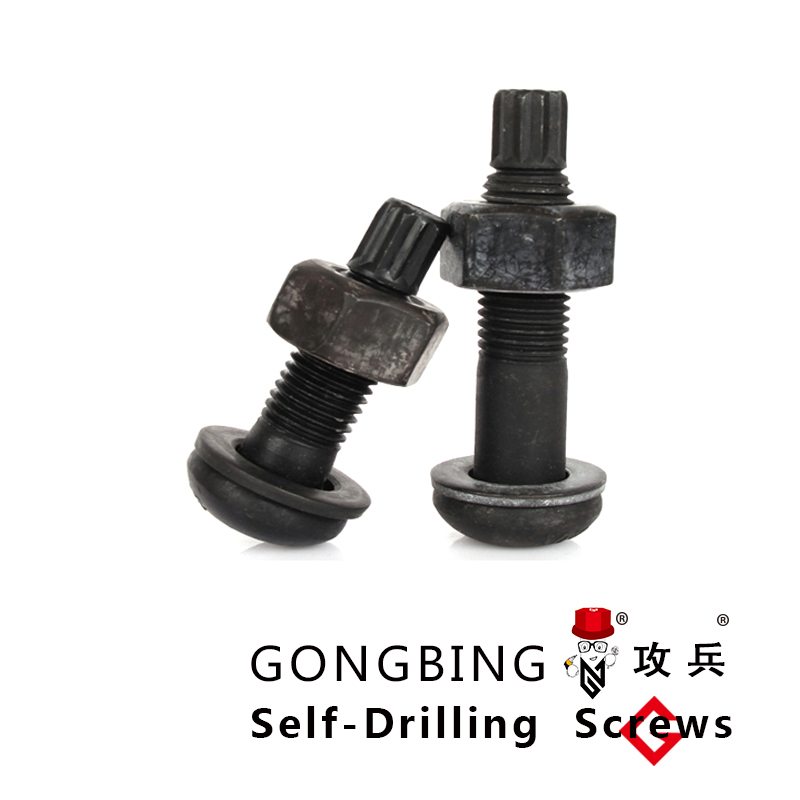Innovative Wedge Anchor Solutions for Securely Fastening in Concrete Applications
Understanding Wedge Anchors for Concrete A Comprehensive Guide
Wedge anchors are essential fasteners used for securing objects to concrete surfaces. Their design is tailored to provide a reliable and robust solution for a variety of applications, from construction projects to heavy equipment installation. This article delves into the features, installation techniques, advantages, and considerations when using wedge anchors in concrete.
What is a Wedge Anchor?
A wedge anchor is a specific type of concrete anchor that consists of a threaded rod, an expansion clip (the wedge), and a nut or washer. When the nut is tightened, the anchor's expansion clip is pulled upward, which causes the wedge to lock firmly into the concrete. This mechanism ensures a strong hold, making wedge anchors ideal for heavy-duty applications.
Types of Wedge Anchors
Wedge anchors are available in different materials and coatings, suitable for various environments
1. Carbon Steel Commonly used for indoor applications. It provides good strength but may corrode if exposed to moisture. 2. Stainless Steel These anchors offer excellent corrosion resistance and are ideal for outdoor applications or where exposure to harsh elements is a concern. 3. Zinc-Plated Often used for general-purpose applications, providing moderate protection against rust and moderate strength.
Advantages of Wedge Anchors
1. High Load Capacity Wedge anchors can support heavy loads, making them suitable for structural and non-structural applications. 2. Easy Installation With the right tools (typically a hammer drill and a wrench), wedge anchors can be installed quickly and efficiently. 3. Versatility They can be used in various applications, including securing electrical boxes, machinery, and railings, along with mounting equipment and fixtures. 4. Robustness Once installed, wedge anchors provide a strong and stable hold, which is essential in high-stress environments.
Installation Process
Installing a wedge anchor requires precision and the right approach
. Here’s a step-by-step guidewedge anchor for concrete

1. Select the Right Size Determine the appropriate size of the wedge anchor based on the load requirements and thickness of the concrete. 2. Drill the Hole Use a hammer drill to create a hole in the concrete. The diameter and depth of the hole should match the specifications of the anchor. Typically, the hole should be drilled at a depth at least 1/4 inch deeper than the anchor's embedment depth.
3. Clean the Hole Remove any dust and debris from the hole using a wire brush or compressed air, as this ensures the anchor will bond effectively with the concrete.
4. Insert the Anchor Place the wedge anchor into the hole, ensuring it is straight and aligned with the fixture to which it will be secured.
5. Tighten the Nut As the nut is tightened, it pulls the expansion clip upward, causing the wedge to expand against the concrete, securing the anchor in place. Be cautious not to overtighten, as this may cause damage to the concrete or the anchor.
6. Test the Installation Once installed, check the stability of the wedge anchor by applying a light load to ensure it is secure.
Considerations
While wedge anchors are highly effective, there are a few considerations to keep in mind
- Concrete Quality Ensure that the concrete is not cracked or compromised, as this can affect the anchor's performance. - Embedment Depth Follow manufacturer recommendations for embedment depth to achieve optimal strength. - Environmental Conditions Select the appropriate material and coating for the specific environment to prevent corrosion and enhance durability.
Conclusion
Wedge anchors are a reliable choice for securing materials and fixtures to concrete surfaces. Their high load capacity, ease of installation, and versatility make them indispensable in various construction and maintenance projects. By understanding the types, advantages, installation steps, and crucial considerations, you can effectively utilize wedge anchors to ensure a stable and secure connection in your concrete applications. Whether you are a DIY enthusiast or a professional contractor, mastering the use of wedge anchors can greatly enhance the safety and durability of your projects.
-
Weatherproof Plastic Expansion Anchors for OutdoorNewsJun.06,2025
-
Sustainability in the Supply Chain: Eco-Friendly TEK Screws ProductionNewsJun.06,2025
-
Load-Bearing Capacity of External Insulation FixingsNewsJun.06,2025
-
Double Head Bolts: Enhancing Efficiency in Industrial MachineryNewsJun.06,2025
-
Corrosion Resistance in Chipboard Screws: Coatings for Wholesale DurabilityNewsJun.06,2025
-
Butterfly Toggle Bolts : Enhancing Structural ResilienceNewsJun.06,2025
